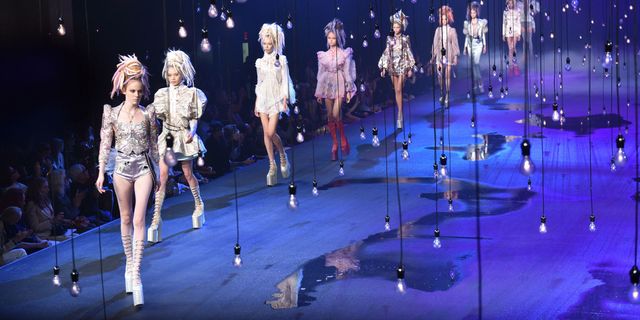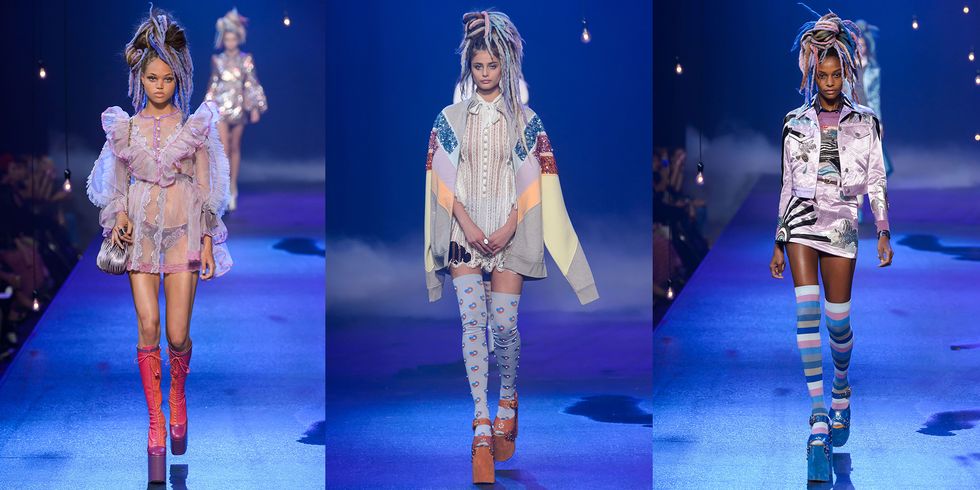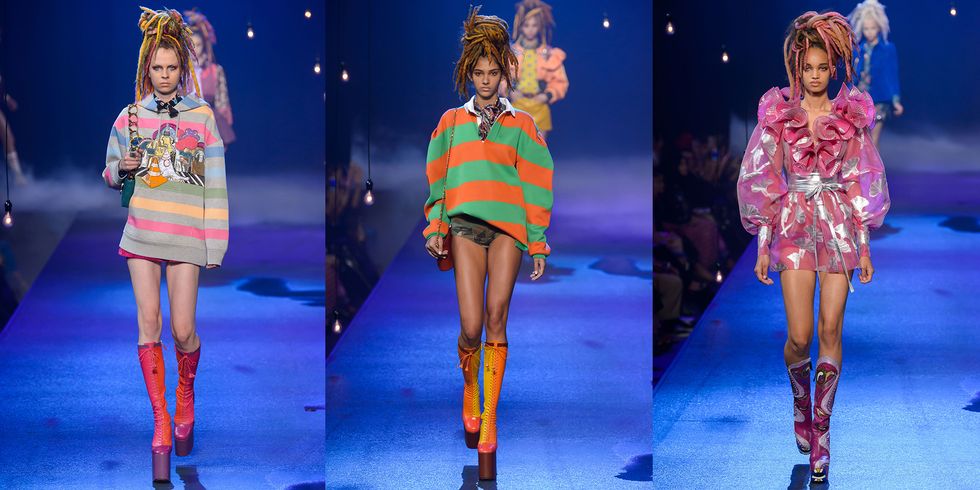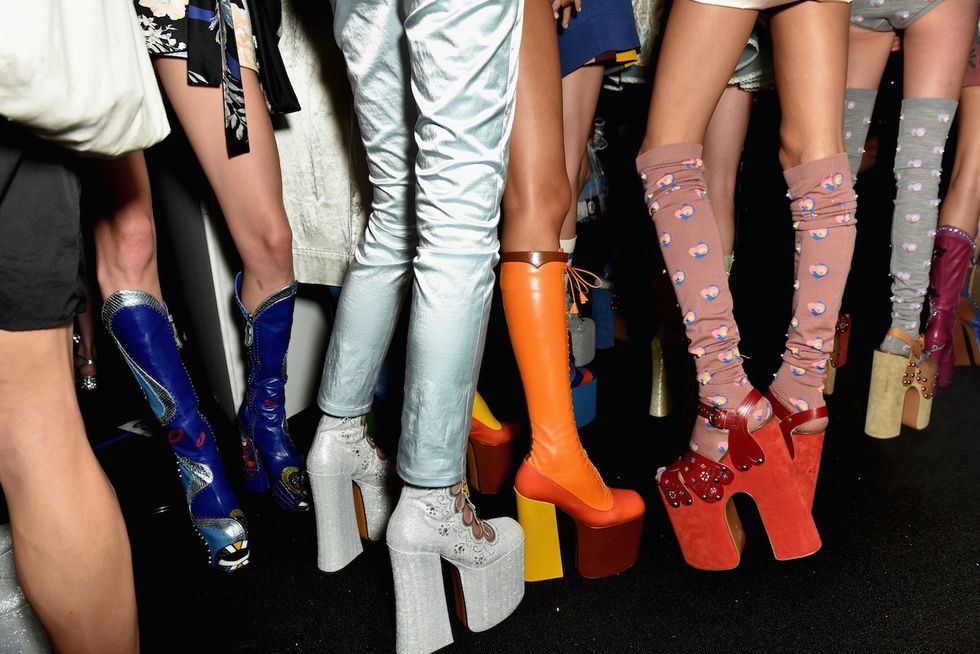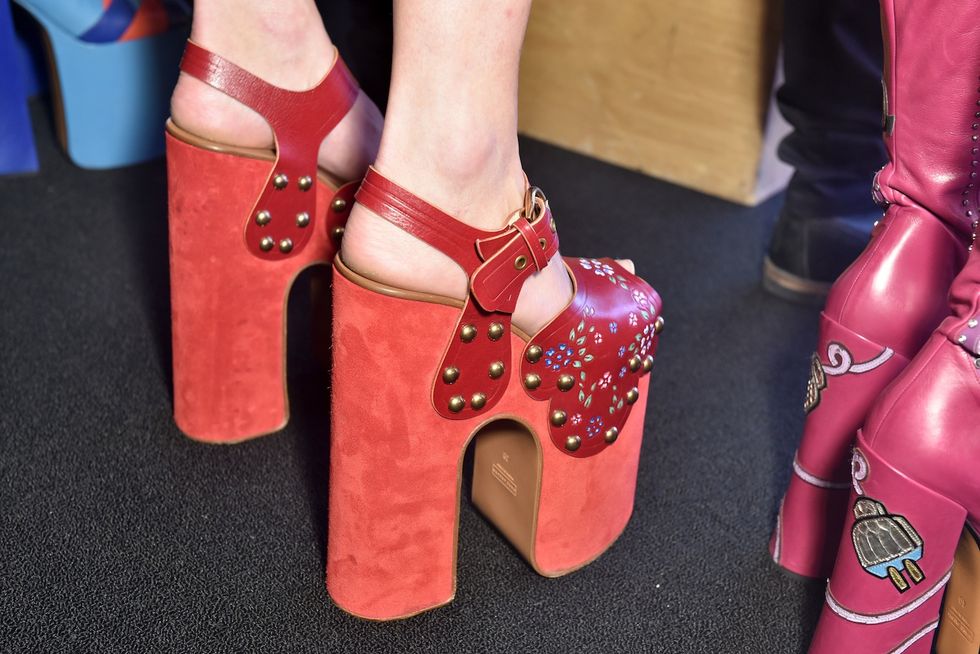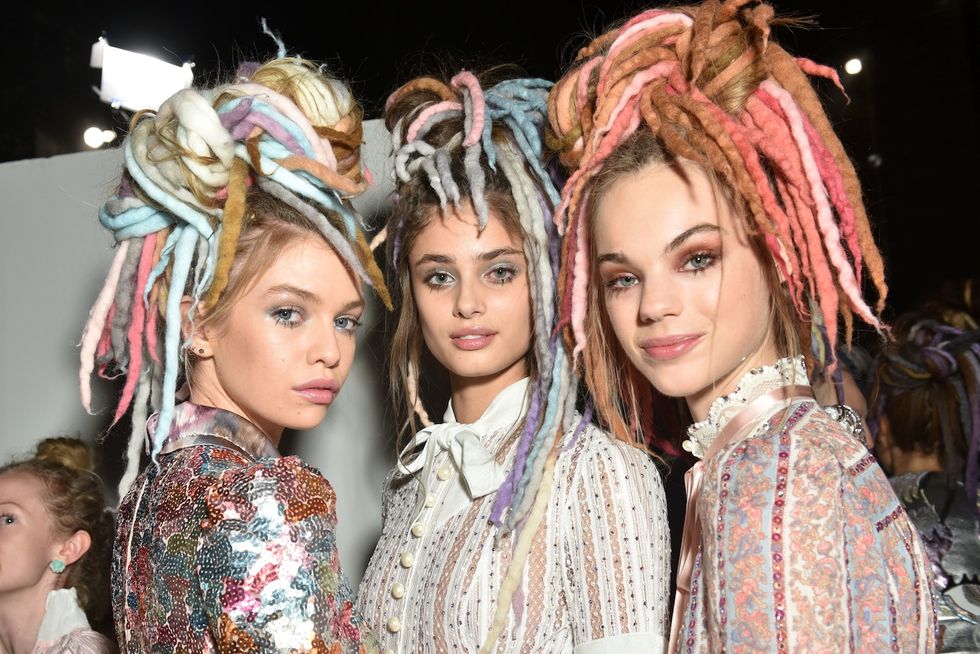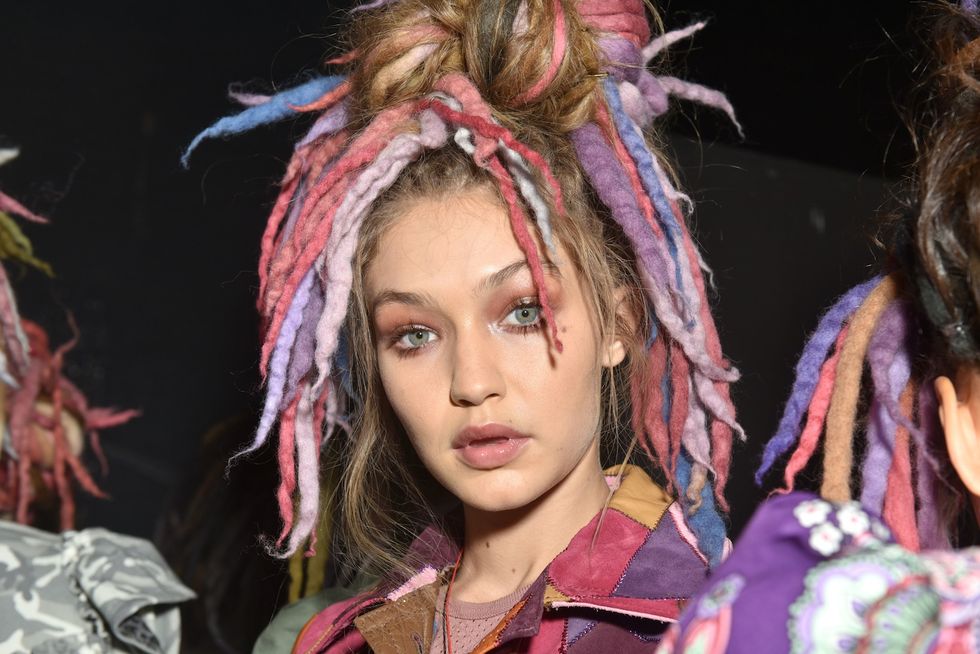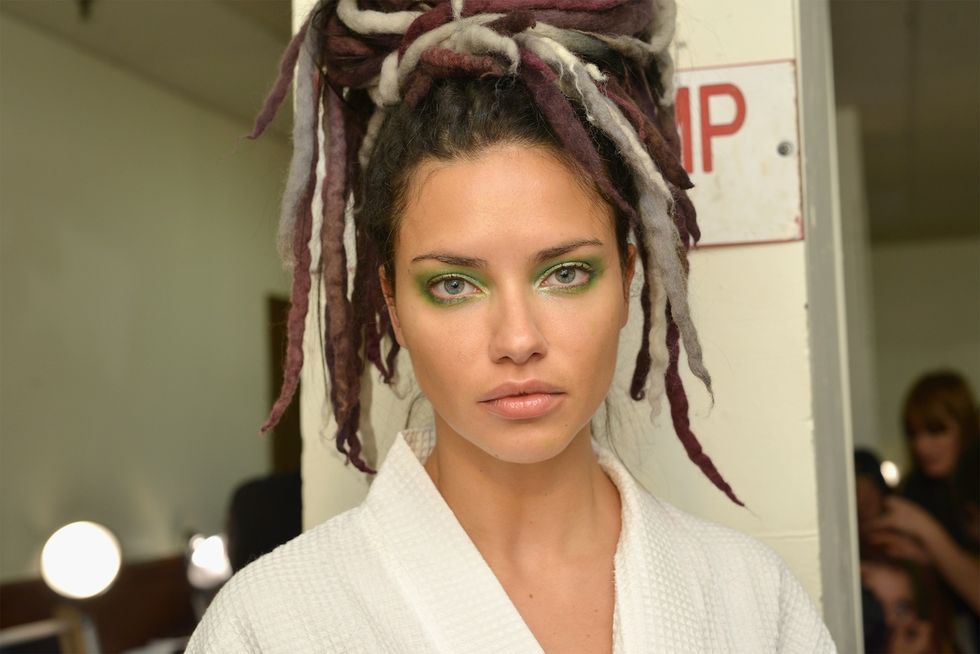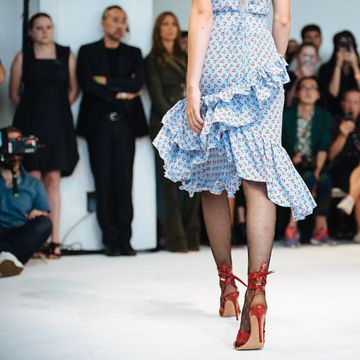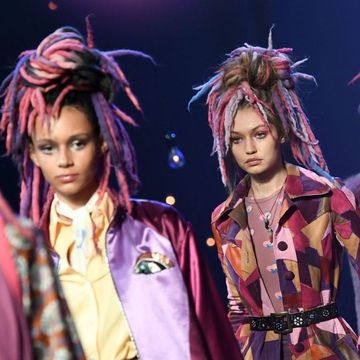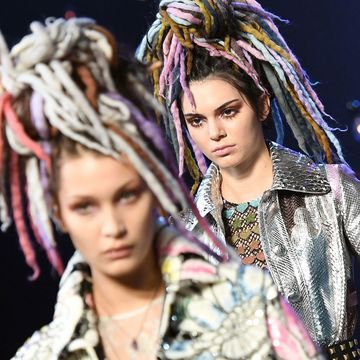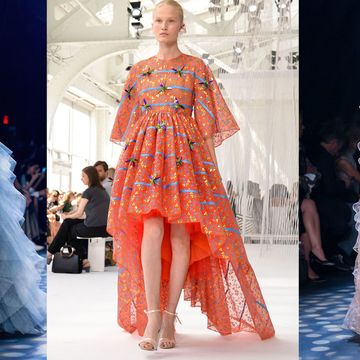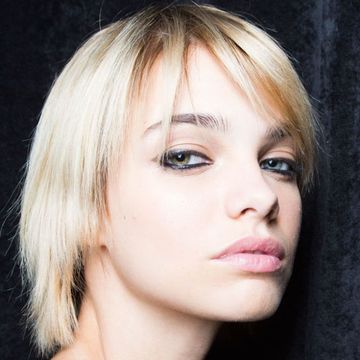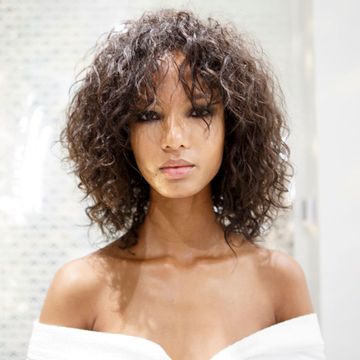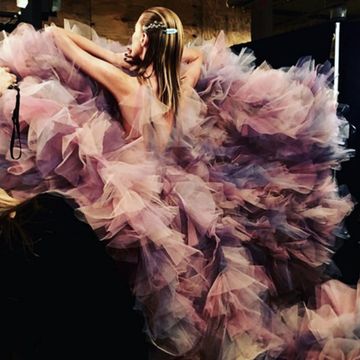Marc Jacobs' show has long served as the grand finale at New York Fashion Week, often providing the final word on an emerging trend or setting a completely new agenda. This season, he did a little of both with the collection he called 'My Twisted Reality,' and divided critics in the process. Lets discuss.
This was his take on streetwear
And it was a surprisingly feminine and fantastical one. As the man who practically wrote the book on grunge, a look born on the street in the Nineties, it would make sense that Marc would want to create his own spin on the streetwear of now.
But if streetwear is anything, it's functional, boyish and unfussy — faithful recreations of plain sweatshirts and sweatsuits, for example, and pragmatic, extra-large puffer coats.
Marc set out to subvert all of that androgynous realism, piling on the girliest of frills and trimmings. There wasn't much that was practical about his teeny weeny babydoll dresses and hot pants done in denim, lace, sequins, ruffles and metallic prints. But there was a very real appeal in seeing him inserting sex and femininity into such a traditionally masculine place. 'This is our interpretation of street wear,' he explained in a statement following the show. 'This is what girls wear on the street: denim, camouflage all that kind of stuff…but I did it my way.'
The question is, whose street, in what era and in what city? Early Aughts Tokyo? Seventies London? Imaginary Kingston? Marc's girls looked part Harajuku, part Bowie, part raver, and controversially a little rasta. (More to come on that last bit.)
The platforms are back
If the clothes were fantastical, the shoes were theatrical.
Remember the sky-high platforms that debuted in his gothic AW16 collection last September? Marc pushed them into Ziggy Stardust territory through trippy colour-blocking and graphic patchwork featuring cartoon-like imagery of frogs, hairdryers, lips, rabbits and castles, all produced in collaboration with the artist Julie Verhoeven. And they made for a big, social media-pleasing statement on the elevated stage inside the Hammerstein Ballroom.
In a week of elaborate, fleeting shopping-themed extravaganzas, the clothes had begun to feel lost and forgettable in all of the messaging. The big 'See Now Buy Now' parties were becoming more memorable than the actual pieces up for sale. In New York, the talk about the selling has been louder than the talk about the clothes.
So at Marc, you couldn't help but feel thankful to have something creative and memorable to see and think about. Whether or not I could ever imagine myself as his SS17 woman, stepping outdoors in satin pink hot pants and a purple fox fur sleeved cropped jacket (I can't), I can at least say I'll never forget what she looks like.
The girls were major
Taylor Hill, Jourdan Dunn, Karlie Kloss, Kendall Jenner, Bella Hadid and Binx all walked the runway.
And they wore dreadlocks...
And here is where things get confusing.
Dreadlocks, having originated in Egypt and been popularised by rastafarians in Jamaica, are pretty exclusively associated with black culture. The majority of the models who wore them in Jacobs show, however, were white.
To be fair, the cast included black women such as Jourdan Dunn and Riley Montana. But the majority weren't.
Adding another layer of complication: His inspiration for the hair was his friend Lana Wachowski, a transgender film director and star of his SS16 campaign, who famously wears her hair in dip-dyed pink locks.
Other points of inspiration included club kids, rave culture and 1980s Boy George. So Marc was effectively referencing white people who have borrowed from black culture — an act that never goes down well (Google Kylie Jenner and cornrows).
Whether or not a group of people can 'own' a hairstyle is a question for the ages, one too big to go into here. But I can say that I've never seen a white designer win an online battle about cultural appropriation, and yet it keeps happening. As a result, it probably would have behooved Marc to respond to the outcry differently — like, introducing a better sense of context. Or perhaps, not saying anything at all??
When taken to task for the dreads on Instagram, he instead replied with this: 'All who cry 'cultural appropriation' or whatever nonsense about any race or skin colour wearing their hair in any particular style or manner - funny how you don't criticise women of colour for straightening their hair.'
For the record, I didn't find the sight of Kendall, Karlie, Bella and crew wearing wool, wiggy locks hugely offensive. Amusing, yes. An affront? Not so much. But Marc's response to the criticism however? Wrong, just wrong. It not only exposed his lack of understanding around the subject of cultural appropriation and racial politics, it proved his critics right by implying that anyone who straightens her hair is stealing whiteness and anyone who locks or braids it is stealing blackness. Conversations around race are never that black and white. And in the case of New York Fashion Week, his reaction is a shame because now all we're doing is once again talking about everything other than the clothes.
